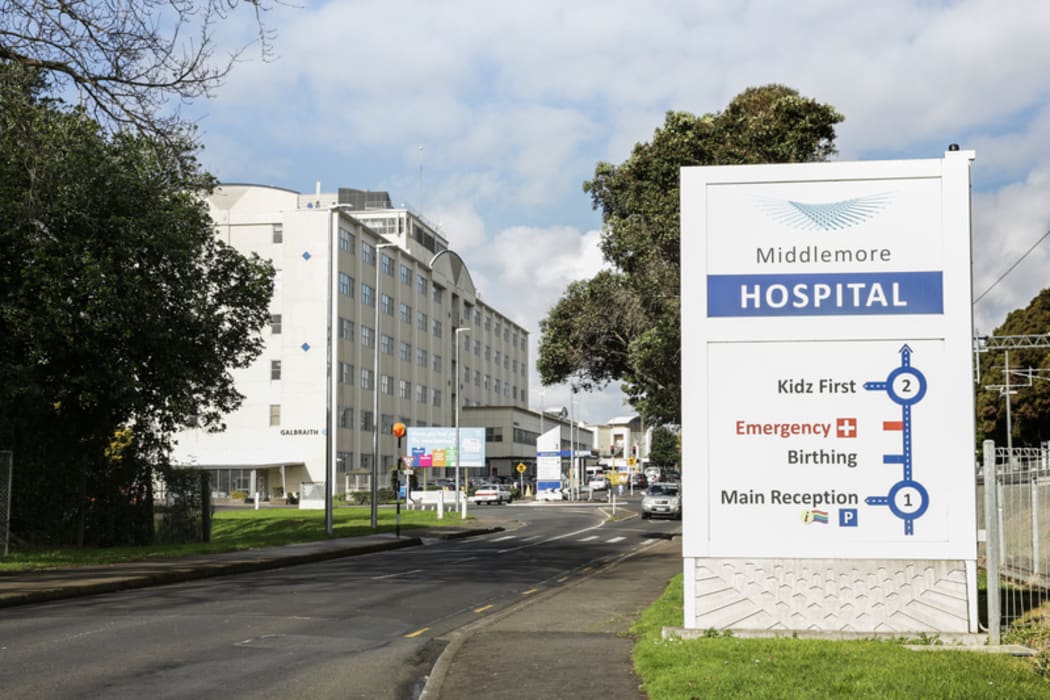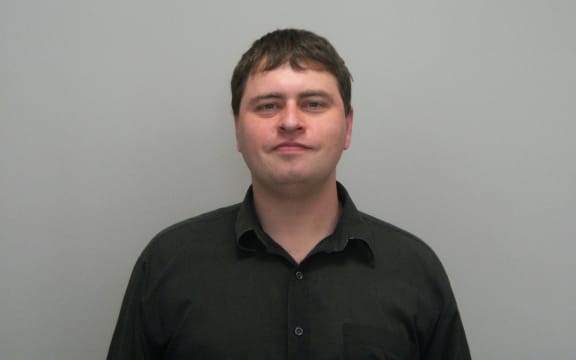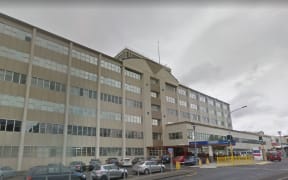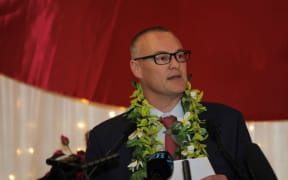A South Auckland hospital was warned that patients in its surgery recovery ward were at "extreme" risk from fire but did not fix the building for more than three years.

Photo:
Documents released to RNZ show the Counties Manukau District Health Board was also warned other buildings at Manukau Superclinic were likely to have been exposed to similar risk, but again it waited years to check or fix them.
This has come to light after RNZ spent the best part of a year trying to find out more about Middlemore Hospital's firestopping problems.
Other hospital buildings are also riddled with holes and gaps, in both Auckland and Northland.
At Whangārei Hospital, more than 800 firestopping problems have been found and are being fixed, documents released under the Official Information Act show.
At the Manukau Superclinic, a faults report by an independent contractor, AssetCare, warned the health board in November 2014 that the fire separation between the switchboard room and the surgery adult recovery room at the Manukau Superclinic was "severely compromised".
"This presents an extreme risk to occupants of the building and requires urgent attention," the report said.
Read AssetCare's Faults Report Including Fixed Faults for the Browns Road Super Clinic (PDF, 805KB)
Read AssetCare's Faults Report Including Fixed Faults since February 2018 as at 1 March 2019
There is a further note dated May 2017 to January 2018: "AssetCare are awaiting CMDH to confirm that these repairs have been completed before we carry out a reinspection."
The report shows this was eventually fixed in February 2018, three years and three months later.
The faults report from 2014 also said: "It appears this issue is widespread in the building in areas that are not readily viewable. Please ensure an independent fire separations contractor fully investigates these shortcomings and then have repaired as a matter of urgency."
However, in the following three years only four faults in total were recorded. There was then a flurry of faults detected last year.
The DHB said in a statement to RNZ that it did routine inspections and fixed fire protection faults as it found them.
But this is not what happened here.
Previously, an internal report from late 2017 said that it was while the DHB was checking the superclinic for leaks - leaks that have badly compromised many of its buildings as RNZ revealed a year ago - that workers discovered holes and gaps in superclinic walls that were poorly firestopped so could let smoke and flames through.
This 2017 report makes no mention of the 2014 Assetcare faults report warning of extreme risks and probable widespread problems.
"It was discovered that the fire cells had been incorrectly constructed by Hawkins Construction [in the late 1990s]. This was not immediately identified at the time of the construction as an independent Fire Engineer had formally signed off the installation," the 2017 report said.
The DHB has failed to provide the name of this fire engineer to RNZ despite repeated requests.
The Auckland Council told RNZ it has been unable to find the engineer's name among its building consent documents.
"Other buildings with suspected non-compliant passive fire protection issues have yet to be fully inspected - specifically KidzFirst [Children's Hospital], McIndoe, and Scott," the 2017 report said.
These three buildings were also built by Hawkins in the last two decades; their firestopping problems run across three pages, and include an entirely missing firewall and lots of substandard fire seals around pipes and cables.
"Kidz First: Multiple fire wall penetrations found around the building on all levels," a 2018 faults report by repair contractor AssetCare said.
"The faults listed were to the point we stopped recording faults regarding fire separation above ceiling tiles."
RNZ asked a Wellington fire engineer, Kenneth Crawford of Pacific Consultants, to look through the Middlemore reports.

Kenneth Crawford Photo: Supplied
"In a hospital environment, often if you have a fire you move patients from one ward to an adjacent ward, and if those fire separations don't work you can get fire or smoke getting between different wards," Mr Crawford said.
"If there's a risk and it's found within months or a year and it gets rectified, hey, it is a real risk but the risk is contained and it's time limited. But if it's there for five years, 10 years or more, that's a significant exposure to people in the building," he said.
Repairs are ongoing at Counties Manukau Health.
In Northland, Dargaville Hospital's firestopping has been fixed; Bay of Islands Hospital is completing a new build, then the old buildings will be demolished; Kaitaia will be fixed after Whangārei Hospital.
The Northland DHB's chief executive, Meng Cheong, said in a statement most of their buildings were more than 50 years old, and that even before 2013 the knowledge about passive fire risks and how to manage them, as well as building skills and policing of fire rules, was limited.
All the DHBs were keen to stress they had active fire protection, including sprinklers and smoke alarms.
That was good, but not enough, said Ron Green of the Association of Building Compliance, who inspects firestopping regularly for building warrants of fitness.
Mr Green was asked how serious Middlemore's listed problems appeared.
"It would depend on where the firestopping is," he said. "Critical areas are escape routes.
"We have got sprinklers and fire alarms, smoke detection, so we have got early warning. However, we don't want smoke going from one fire cell to another, so some [faults] could be critical, yes."
Firestopping rules have been in place since the early 1990s, were sharpened in 2004, but have been widely ignored until recently, even in apartment blocks and hospitals.
The Waitemata DHB said its firestopping reports showed it had no problems.
Firestopping is meant to be inspected during a building's annual warrant of fitness checks done by a privately employed inspector called an Independent Qualified Person (IQP).
RNZ asked the Auckland Council which IQP has been signing off Middlemore's buildings. Eventually, the council said it was AssetCare.
AssetCare prepared the 2014 report identifying the faults at the Manukau Superclinic.
But AssetCare's owner Peter Clark told RNZ his firm had worked for Counties Health only for a few years, and has not signed off any firestopping it knew was inadequate; it was focused on finding the faults and fixing them.
His company had let the council know about any deficiencies via what was known as a "report in lieu of" the warrant of fitness report, and it was up to the council to accept that report or not, given the defects were being addressed over time, Mr Clark said.
The buildings were as safe as possible as was reasonably practicable, he said.
*Phil Pennington will be reporting further on this in coming days





